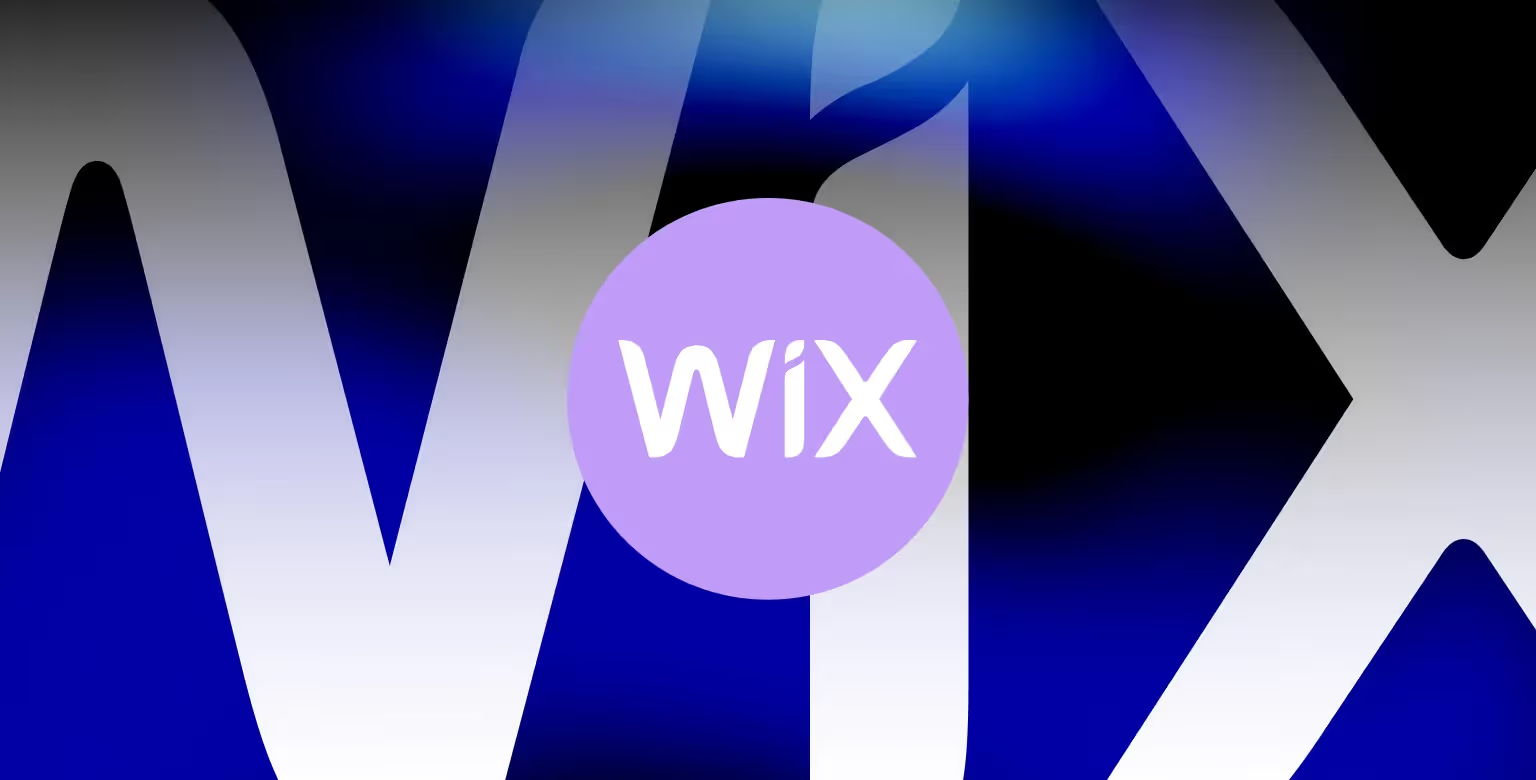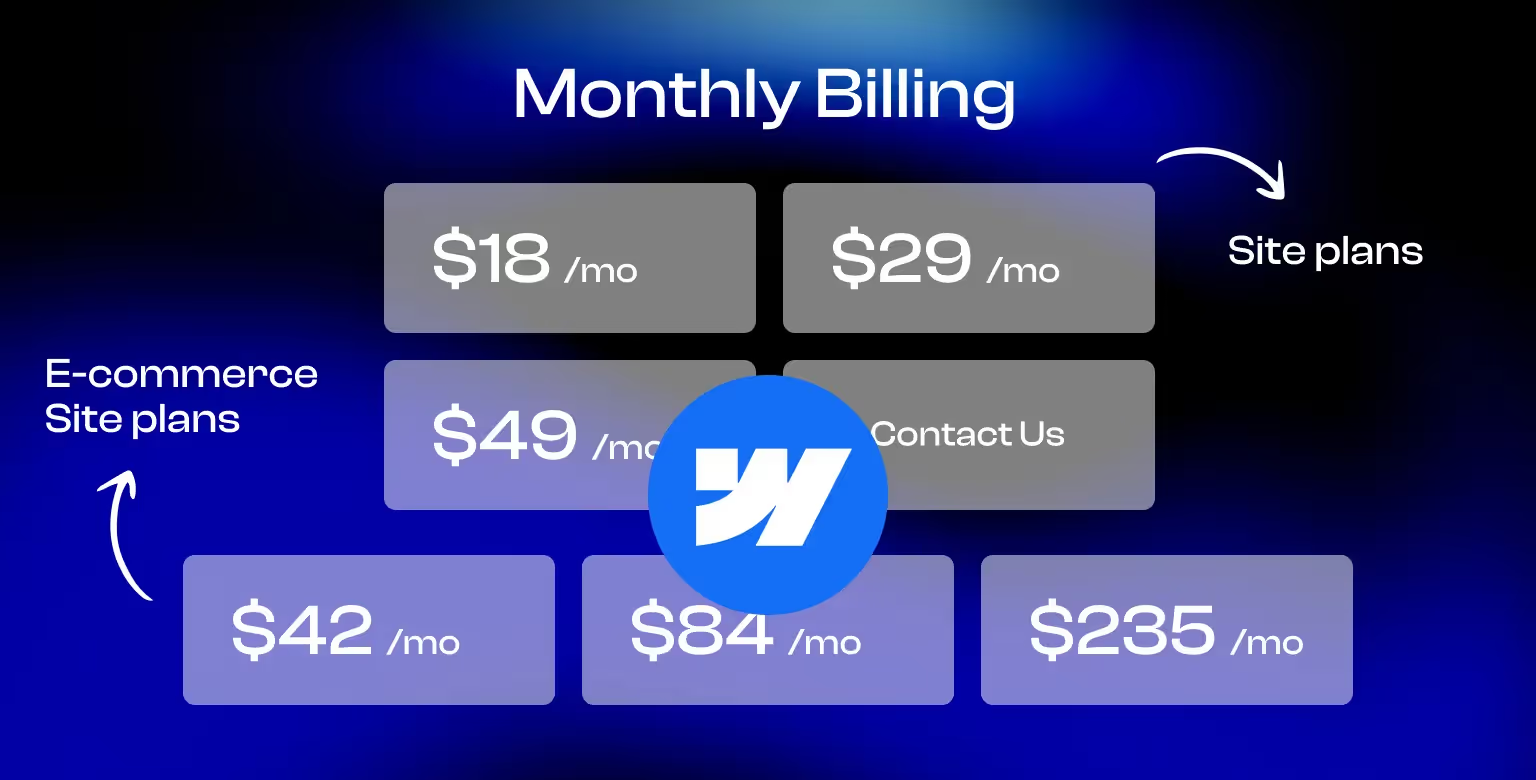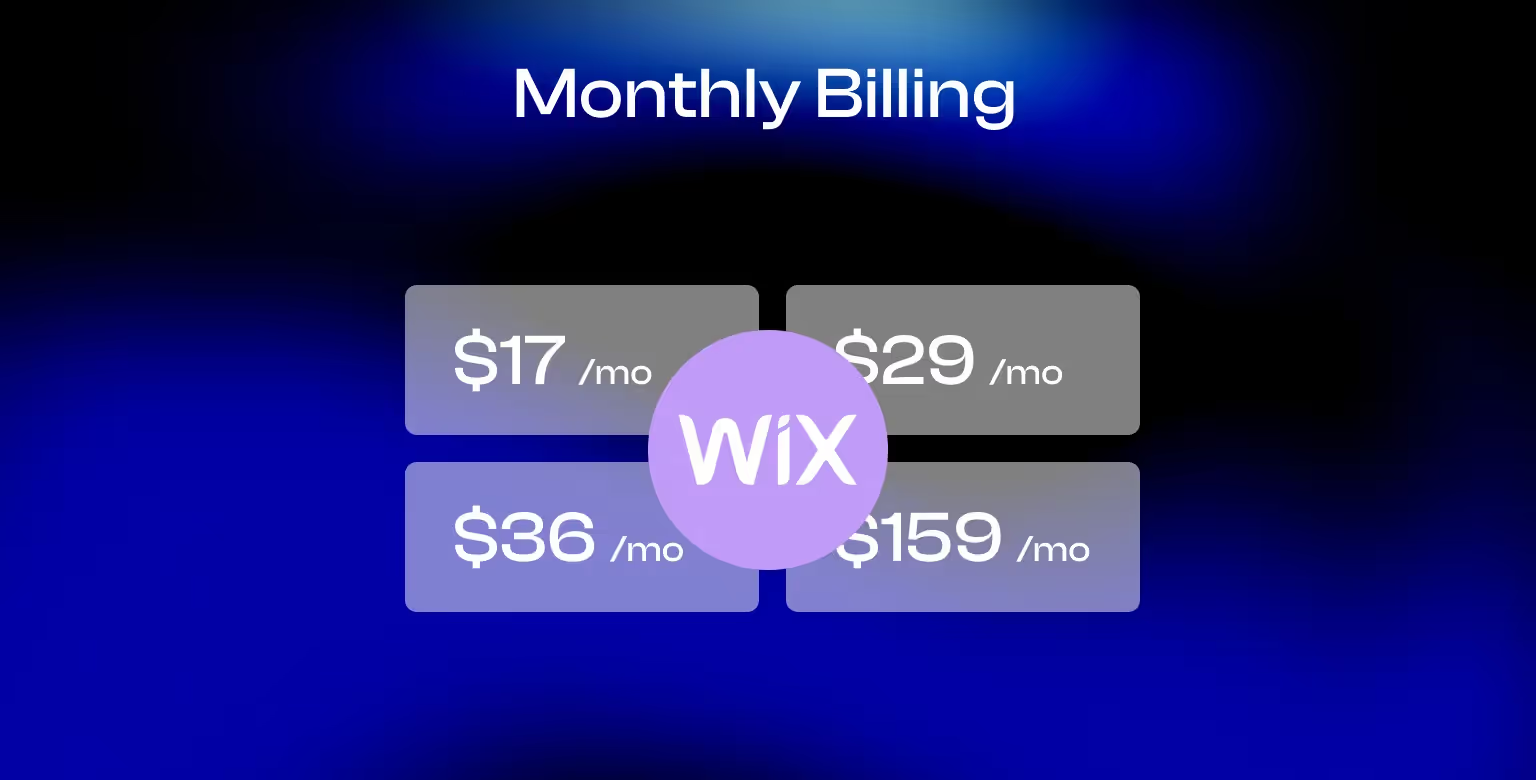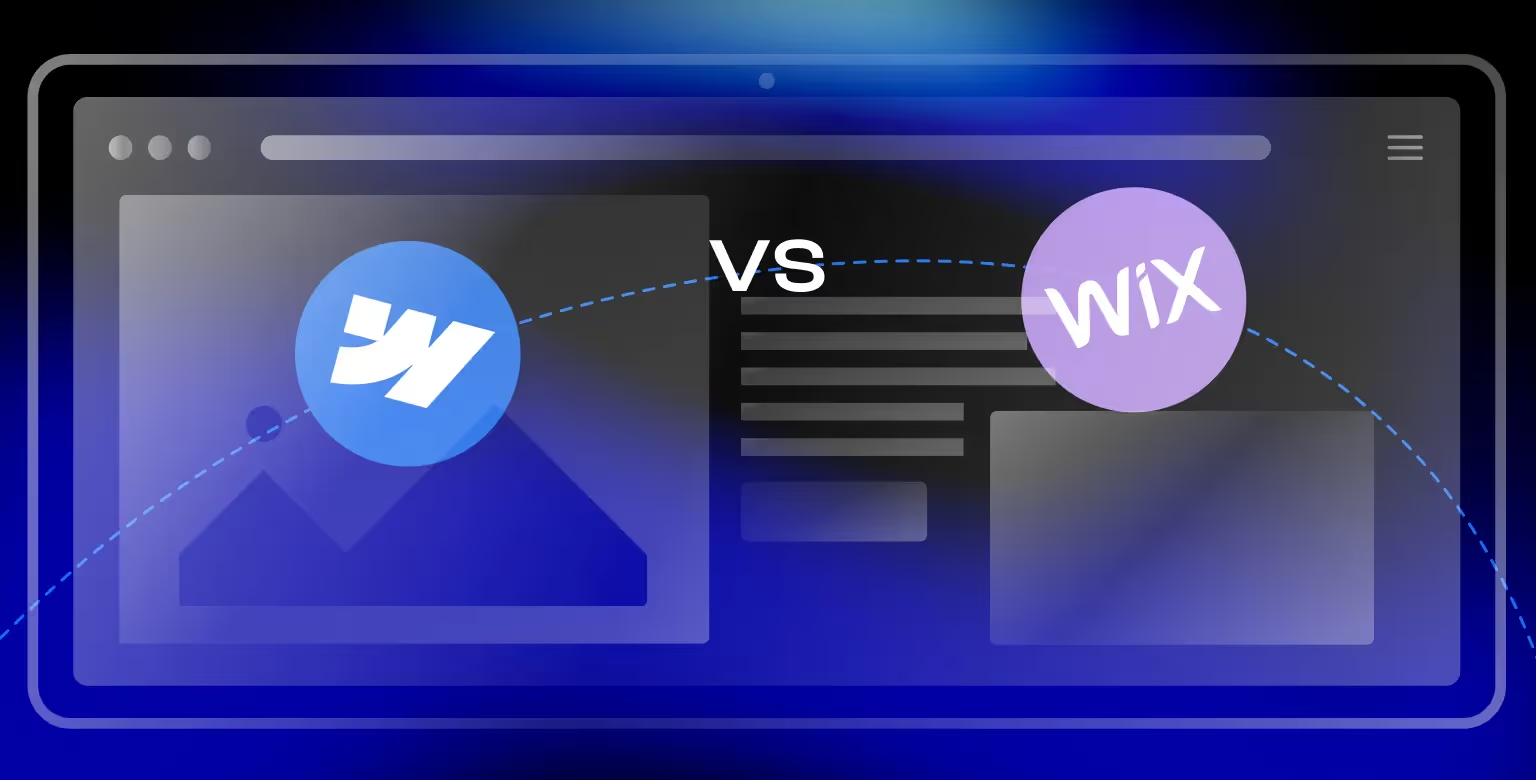So, you have decided that it is time to build your own website? Well, there are many options to choose from to get the job done. And, it would come as no surprise that you have stumbled on Webflow and Wix during your research.
Both are popular in the website-building arena, packed with features designed to make the process smoother than a jazz solo. But with all their bells and whistles, choosing between them can sometimes feel like picking a favorite child.
That's why we're going over the Webflow vs. Wix debate, breaking down their strengths and weaknesses, and helping you figure out which platform will truly rock your online world.
Think of us as your guides, here to navigate the jargon and get you one step closer to launching a website that'll make your competitors weep with envy.
So grab your coffee, settle in, and let's get ready to rumble!
What is Webflow?
Webflow is a powerful website builder and content management system (CMS) that enables users to design, build, and launch responsive websites without needing extensive coding skills.
Launched in 2013, it has gained popularity among designers, developers, and businesses for its intuitive interface and robust features.
And if you want to have a more detailed outlook on those features, we have written an article about Webflow's capabilities as a platform.

Key Features of Webflow
- Visual Design Interface: Webflow allows users to create websites using a drag-and-drop interface. This means you can develop your site visually while the platform automatically generates clean HTML, CSS, and JavaScript code in the background.
- CMS Capabilities: The platform includes a built-in CMS that lets users manage dynamic content easily. You can create CMS Collections, essentially templates for content types like blog posts or product pages that can be reused across your website. To learn more about the feature, we encourage you to read our article on Webflow's CMS capabilities.
- Responsive Design: Webflow ensures that websites are responsive, meaning they look good on any device, from desktops to smartphones. It comes with hundreds of customizable templates tailored to various industries.
- SEO Tools: Webflow is equipped with built-in SEO features, such as customizable meta tags and automatic sitemap generation. This helps improve your site's visibility on search engines without needing external plugins. You can check out our article on Webflow’s SEO capabilities and common misconceptions to learn more about the specific features.
- Fast Hosting: Websites built on Webflow benefit from high-speed hosting powered by AWS, which contributes to faster load times and better performance overall.
Use Cases
Webflow is versatile and can be used to create a wide range of websites including but not limited to:
- Business Websites: For local or international businesses.
- E-commerce Sites: Selling both digital and physical products.
- Portfolios: Showcasing personal or professional work.
- Blogs: For content creators looking to share their insights.
SaaS Platforms: For software-as-a-service offerings with integrations such as Memberstack.
Why Choose Webflow?
Webflow stands out in the crowded website builder market due to the flexibility that comes from visual development and technical capabilities. It allows designers to maintain control over their creative vision while also providing developers with a platform that produces clean, maintainable code.
This makes it an attractive option for businesses looking to establish a strong online presence without the complexities often associated with traditional web development.
What is Wix?
Wix is a popular website-building platform that enables users to create and manage websites without requiring any coding skills.
Launched in 2006, it has grown to become one of the leading website builders, favored by individuals, small businesses, and larger enterprises for its user-friendly interface and extensive features. Wix is also known for their Editor X feature which is similar to Webflow to a degree.

Key Features of Wix
- Drag-and-Drop Editor: Wix offers an intuitive drag-and-drop interface that allows users to customize their websites easily. You can add text, images, videos, and other elements by simply dragging them into place, making them accessible for users of all skill levels.
- Template Library: With over 900 professionally designed templates, Wix provides a wide range of options tailored to various industries and purposes. Users can choose a template that fits their vision and customize it to suit their needs.
- E-commerce Capabilities: Wix includes robust e-commerce features that allow users to set up online stores. This includes tools for managing inventory, processing payments, and tracking orders, making it suitable for businesses looking to sell products online.
- SEO Tools: Wix provides built-in SEO features that help users optimize their websites for search engines. This includes customizable meta tags, alt text for images, and a personalized SEO plan based on the user's business type. For the full list of options, see our guide on the best CMS for SEO.
Use Cases
Wix is versatile and can be used for various types of websites including:
- Business Websites: Good for small businesses looking to establish an online presence.
- E-commerce Stores: For selling products directly to consumers.
- Blogs: Great for content creators wanting to share their thoughts and insights.
- Event Sites: Useful for promoting events and managing registrations.
Why Choose Wix?
Wix is known for its combination of ease of use and flexibility. It caters to both beginners who may have no design experience and advanced users who want more control over their site’s design.
The platform's extensive features, including mobile optimization, hosting services, and marketing tools, make it a comprehensive solution for anyone looking to build a professional website quickly.
Webflow vs Wix: Key Differences
While both Webflow and Wix might seem like two peas in a pod at first glance (both help you build websites, right?), they actually offer quite distinct experiences.
Think of it this way: they both get you to the finish line, but they take different routes to get there.
Webflow and Wix Pricing
It is fair to say that pricing plans for both options tend to get a bit complicated. These are definitely convoluted and require thorough research to understand.
Webflow Pricing Plans

Wix Pricing Plans

Final Verdict
Wix is a good solution for users with no website design experience who want to create a clean and functional website quickly.
However, this user-friendliness often comes at the expense of design flexibility, as users are somewhat limited to the templates provided by Wix.
In contrast, Webflow stands out as a more powerful option for those with some website development experience. It offers extensive customization capabilities that enable users to tailor every aspect of their site, from layout to interactions.
Webflow's robust CMS features empower users to manage dynamic content effectively, making it an attractive choice for businesses looking to build a more complex online presence. And while we do favor Webflow over Wix, the question still remains, is Webflow the best developer tool? For a broader comparison of platforms beyond these two, see our Webflow alternatives guide.
When it comes to Webflow, Tilipman Digital takes pride in delivering both beautiful and functional websites that bring results. So, if you decide to go the Webflow way, reach out, and Tilipman Digital will be there to transform your idea into a stunning website.




